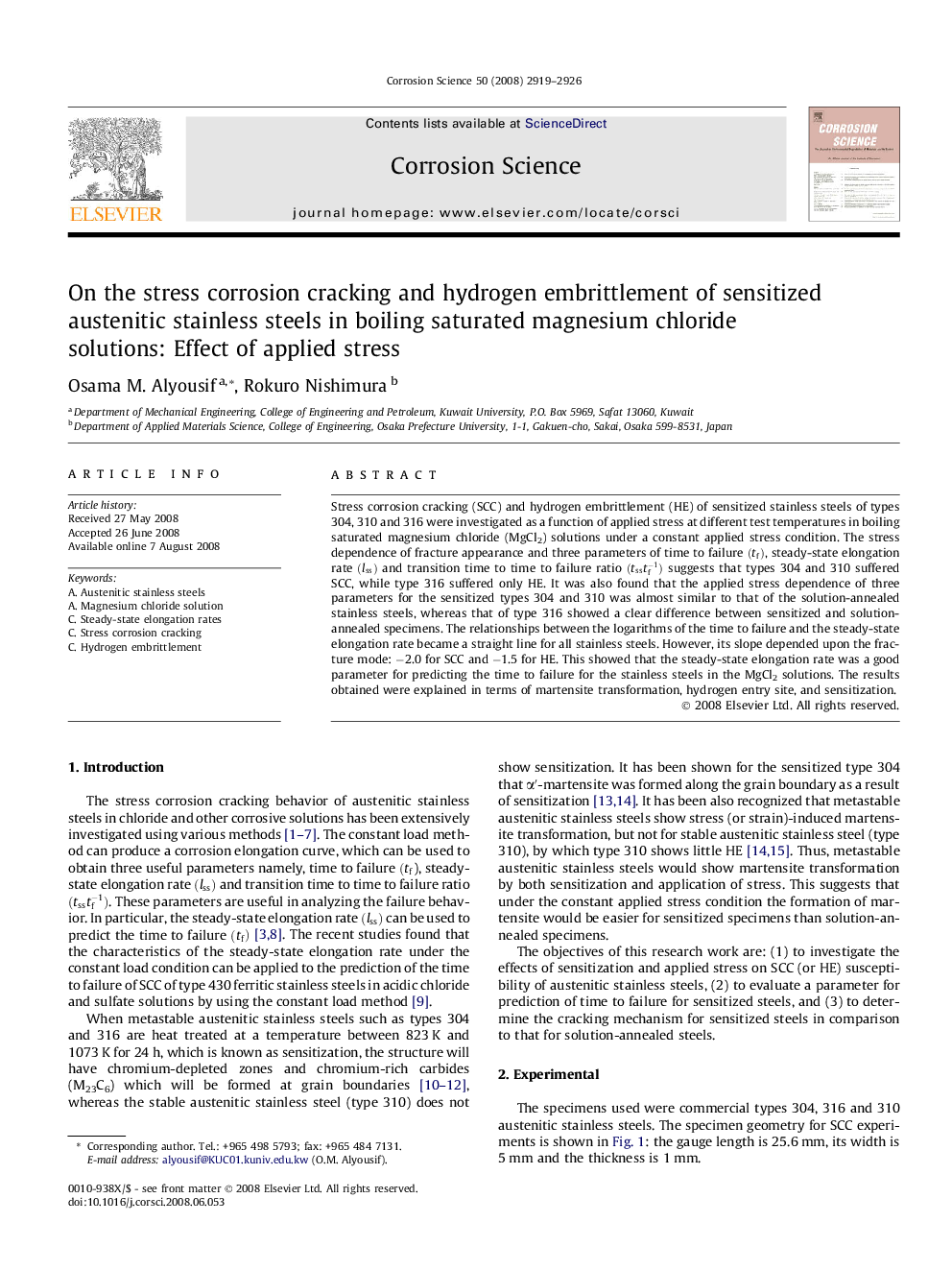| Article ID | Journal | Published Year | Pages | File Type |
|---|---|---|---|---|
| 1471489 | Corrosion Science | 2008 | 8 Pages |
Stress corrosion cracking (SCC) and hydrogen embrittlement (HE) of sensitized stainless steels of types 304, 310 and 316 were investigated as a function of applied stress at different test temperatures in boiling saturated magnesium chloride (MgCl2) solutions under a constant applied stress condition. The stress dependence of fracture appearance and three parameters of time to failure (tf)(tf), steady-state elongation rate (lss)(lss) and transition time to time to failure ratio (tsstf-1) suggests that types 304 and 310 suffered SCC, while type 316 suffered only HE. It was also found that the applied stress dependence of three parameters for the sensitized types 304 and 310 was almost similar to that of the solution-annealed stainless steels, whereas that of type 316 showed a clear difference between sensitized and solution-annealed specimens. The relationships between the logarithms of the time to failure and the steady-state elongation rate became a straight line for all stainless steels. However, its slope depended upon the fracture mode: −2.0 for SCC and −1.5 for HE. This showed that the steady-state elongation rate was a good parameter for predicting the time to failure for the stainless steels in the MgCl2 solutions. The results obtained were explained in terms of martensite transformation, hydrogen entry site, and sensitization.
